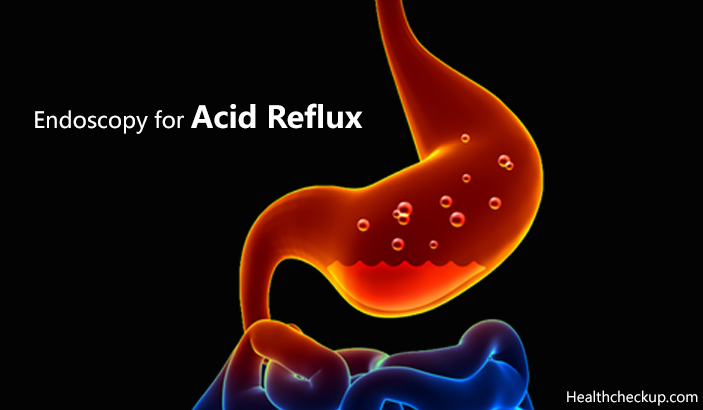First let’s understand what Acid Reflux is. There is a circular band of muscle (a sphincter) at the junction between the oesophagus and stomach.This relaxes to allow food down, but then normally tightens up and stops food and acid leaking back up(refluxing) into the oesophagus. In effect, the sphincter acts like a valve. If the valve doesn’t close properly, allowing acid to leak up out of the stomach, you may experience symptoms of gastro-oesophageal reflux. Let’s look into when endoscopy for acid reflux is done?
Common Symptoms of Acid Reflux are:
- Heartburn: a burning pain or discomfort that may move from the stomach to your abdomen or chest, or even up into your throat
- Regurgitation, Bloating, Bloody or black stools or bloody vomiting, Burping, Dysphagia, Hiccups, Nausea, Weight loss for no known reason, Wheezing, dry cough, hoarseness, or chronic sore throat
These are Common Risk Factors for Acid Reflux Disease:
- Eating large and heavy meals or lying down right after a meal
- Being overweight or obese
- Eating certain foods: spicy or fatty foods
- Drinking alcohol, carbonated drinks, coffee, or tea
- Smoking
- Being pregnant
- Taking aspirin, ibuprofen, certain muscle relaxers, or blood pressure medications
Endoscopy for Acid Reflux is done to investigate, diagnose and treat the disease. If you try medication and still have heartburn accompanied by other alarming symptoms such as difficult or painful swallowing, bleeding, anaemia, weight loss, or recurrent vomiting , after one to two months then an endoscopy might be recommend to check for other things that might explain your troubles, like ulcers or acid burns (erosions) on the wall of the esophagus or stomach.
How is Upper Gastro Intestinal Endoscopy Done?
During the procedure, an endoscope is inserted, which is a thin flexible tube equipped with a camera and a light, through the mouth of a sedated patient and into the esophagus, stomach, and first portion of the small intestine.
Is the Endoscopy Procedure Painful?
An endoscopy isn’t usually painful, and most people only experience some mild discomfort, similar to indigestion or a sore throat.
Overuse of endoscopy could cause acid reflux to worsen. Due to routinely used endoscopy for diagnostic purpose.
What are the Side Effects of an Endoscopy?
An Endoscopy is a very Safe Procedure. Rare Complications Include:
-
Bleeding:
Your risk of bleeding complications after an endoscopy is increased if the procedure involves removing a piece of tissue for testing (biopsy) or treating a digestive system problem. In rare cases, such bleeding may require a blood transfusion.
-
Infection:
Most endoscopies consist of an examination and biopsy, and risk of infection is low. The risk of infection increases when additional procedures are performed as part of the endoscopy. Most infections are minor and can be treated with antibiotics. Preventive antibiotics are given before the procedure if there is a higher risk of infection.
-
Tearing of the Gastrointestinal Tract:
A tear in theesophagus or another part of the upper digestive tract may require hospitalization, and sometimes surgery to repair it. The risk of this complication is very low. The risk increases if additional procedures, such as dilation to widen theesophagus, are performed.
Symptoms to Watch for are:
- Fever
- Chest pain
- Shortness of breath
- Bloody, black or very dark colored stool
- Difficulty swallowing
- Severe or persistent abdominal pain
- Vomiting, especially if your vomit is bloody or looks like coffee grounds.
Medically Reviewed By









